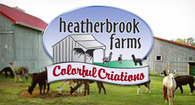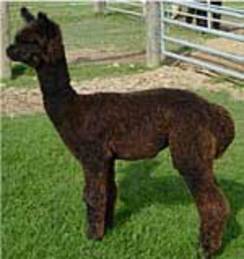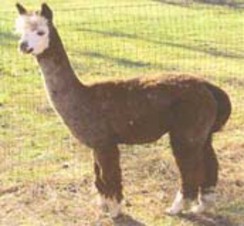Alpaca Quick Facts
- Average Height: 36" at withers (32-37" range) - under 5 foot overall.
- Average Weight: 120-175 pounds (1/3 to 1/2 the size of a llama) range from 100-200 pounds # Life Span: 15-20 years or more.
- Breeding Maturity: Females 14 months to 2 years - Males 2-3 years.
- Average Gestation: 335-345 days (may depend on fall or spring births).
- Births: 95% normal and unassisted single births usually walking/running/nursing within an hour.
- Birth Weight: 11-20 pounds - stand immediately with low infant mortality.
- Average Weaning: 5-6 months - 60-90 pounds.
- Land: 5-8 alpacas per acre.
- Barn/Shelter: Three-sided is fine with alpacas. They do not challenge fences. The fences are to keep predators out.
- Huacaya - Fleece is soft, fluffy and usually has a crimp or wave, grows out from the body, giving this breed the "teddy bear" or poofy look.
- Suri - Fleece is long, lustrous, silky, fine, curly fiber hanging straight down the body in a "dreadlocks" or waterfall look.
- Fleece: Lightweight, fine lustrous, soft as cashmere. Because of less oil (lanolin) than sheep wool, it is easier and less expensive than sheep's wool to process with more "milled" fiber per pound than other fibers. It is warmer (hollow center), softer and stronger than most other fiber and rivals cashmere. Because of its softness and because it is not scratchy it can be used next to the skin.
- Fiber Color: 22 basic colors that can be blended into over 200 shades: white to fawn, browns, maroons, greys and blacks.
- Fiber Sells: $1.50 to $6.00 per ounce.
- Annual Shear Yield: Once a year from 3-12 pounds.
- Average Prices: Females - $5,000-$45,000 Males - $1,000-$8,000 (but herd sires will go from $25,000 to $405,000).
- Diet: Grass/hay, water and a pound or less a day of grain and mineral supplements. This costs about the same as feeding a large dog.
- Insurable: 100% for mortality and herdsire reproduction ability.
- Ruminants: Survive on low protein grass and hay. They need vitamin and mineral supplements because of our "farmed out" and mineral depleted soils.
- Alpacas are one of the easiest of livestock to maintain. They use "communal dung piles" for most of their disposal (makes fantastic natural fertilizer - requires no composting.)
- Foot: Padded not hooved. Toenails need clipping once to twice a year.
- Spit?: Yes, but only occasionally and mostly at other alpacas when vying for food or females "spitting off" herdsire advances when pregnant.
- Worming: Occasionally # Vaccination: Once a year.
- Bite: Never as they have no upper teeth.
- Kick: Rarely.
- Friendly/inquisitive: Yes - Contradictory as they are intensely curious, but amazingly shy.
- Huggable: Yes, but not the normal alpaca. Most want to be near you but not held or petted.
- Ecological: Padded feet do not tear up turf like hooves.
- Sustainable: Don't need to be slaughtered for food to reap an end product or return.
- National Herd Size: Total + 50,000 Huacaya + 42-44,000 Suri + 6- 8,000
With demand increasing for breeding stock, importations closed, a strong and secure registry, reproduction of no more than one per year per female, the value of breeding stock has been maintained at a high for 20 years. Combined with the considerable tax advantages they make a great-deferred wealth accumulation program. The National Registry is closed to import and requires DNA for Identification purposes. The National Organization is strong in marketing
Monday, July 25, 2011



